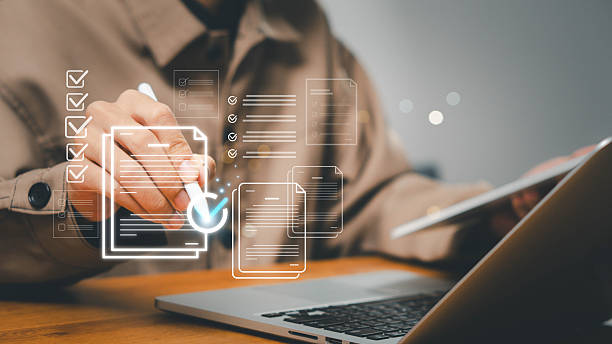An Introduction to On-Page SEO and Its Importance in Digital Success
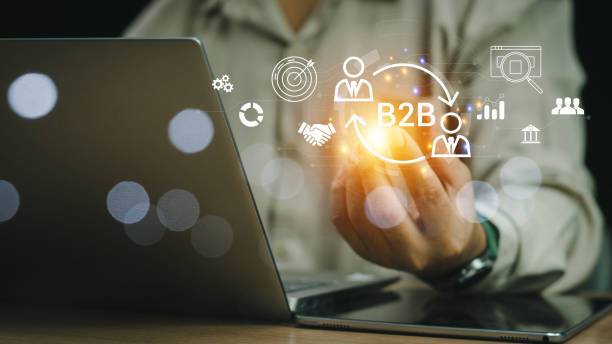
In today’s competitive world of #digital_marketing, On-Page SEO is the cornerstone of any successful strategy for visibility in search engines.
Many people assume that optimization is limited to external link building and domain authority, whereas without a strong foundation of powerful On-Page SEO, your external efforts may not yield the desired results.
On-Page SEO refers to a set of actions taken within your website to help search engines better understand your content and display it in higher rankings.
These actions include optimizing page titles, meta descriptions, URL structure, content, images, and many other elements.
The importance of On-Page SEO stems from the fact that you have complete control over it.
Unlike link building, which depends on external factors, you can meticulously manage every aspect of your on-page optimization.
This educational section will help you gain a deeper understanding of how this vital part of SEO works.
Search engines like Google aim to provide the best and most relevant results to their users.
Therefore, the more organized and clear your site is in terms of On-Page SEO, the greater its chance of being understood and ranking higher.
This approach not only aids in ranking but also improves user experience, which is itself a significant factor in modern SEO.
This explanatory section will give you a comprehensive overview of the fundamentals of this field.
How much does losing business leads due to an unprofessional website cost you? Solve this problem permanently with professional corporate website design by Rasawweb!
✅ Increase credibility and trust of potential customers
✅ Easier attraction of new business leads
⚡ Get a free consultation now!
Keyword Research; The Beating Heart of On-Page SEO
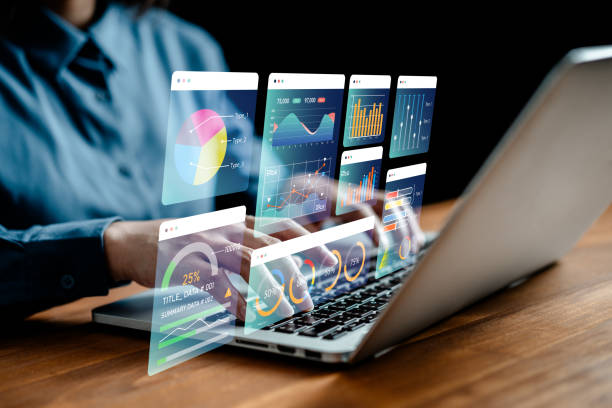
#Keyword_research is not only the backbone of every On-Page SEO campaign but also a roadmap for creating content that users are genuinely looking for.
Without a proper understanding of the words your target audience uses to find your products or services, all your subsequent efforts in on-page optimization will be fruitless.
This specialized process involves identifying words and phrases that have the greatest potential to attract relevant traffic to your website.
Tools like Google Keyword Planner, Ahrefs, Semrush, and Moz Keyword Explorer can significantly assist you in this journey.
A comprehensive keyword research not only identifies high-volume keywords but also includes Long-Tail Keywords and LSI (Latent Semantic Indexing) Keywords, which often have less competition and better reflect user intent.
For example, instead of focusing solely on “buy phone,” you can focus on “best phone for underwater photography,” which leads to more engaging and targeted content.
Competitor analysis is also a crucial part of this process; by examining the keywords your competitors rank for, you can discover new opportunities for your website’s On-Page SEO.
This guidance step is comprehensive for starting any optimization project, and its importance cannot be overstated.
Ultimately, successful On-Page SEO is built upon a deep understanding of audience needs and relevant keywords.
Optimizing On-Page Elements; The Foundation of Effective On-Page SEO

#On-page_elements, such as title tags, meta descriptions, and heading tags (H1-H6), are vital components of On-Page SEO that directly help search engines and users understand the topic of your page.
Optimizing these elements is a specialized task that requires great precision.
The Title Tag is the most important on-page element displayed in search results and should include the page’s main keyword while being appealing enough to encourage user clicks.
Meta descriptions, although not directly influencing ranking, play a very significant role in persuading users to click on your link in search results.
These descriptions should include keywords and provide a summary of the page’s content to create engaging content that attracts users.
Important On-Page SEO Elements
| Element | Description | Importance in SEO |
|---|---|---|
| Title Tag | The most important element in search results; must include the main keyword. | Very High |
| Meta Description | An attractive summary of the content that encourages the user to click. | Medium (Indirect Factor) |
| Heading Tags (H1-H6) | Structures the content; H1 must include the main keyword. | High |
| Friendly URL | Short addresses including keywords that have high readability. | High |
The H1 tag should be the main title of the page and used only once per page, containing the page’s primary keyword.
H2 to H6 tags are used for segmenting and structuring content, aiding readability and better comprehension by users and search engine crawlers.
Correct use of these elements not only helps with On-Page SEO optimization but also improves user experience, as users can easily understand the content structure and find their areas of interest.
This explanatory section is of great importance for both SEO beginners and experts and must be executed with high precision to yield the highest returns for your website’s On-Page SEO.
Producing Quality Content and Optimizing It for On-Page SEO
![]()
#Quality_content is the cornerstone of every successful On-Page SEO strategy.
Search engines are increasingly focusing on the quality, relevance, and value of content for the user.
Producing content that provides comprehensive and accurate information, meets user needs, and is well-organized is of paramount importance.
This content should not only be technically optimized for On-Page SEO but also be engaging and readable.
Intelligent use of primary and secondary keywords in the text, without exaggeration or artificial repetition (Keyword Stuffing), is crucial.
Your text should be written in a way that is understandable to search engines and also engaging and informative for users.
Using synonyms and Latent Semantic Indexing (LSI) Keywords helps search engines better understand the main topic of your content and prevents excessive repetition of a phrase.
Your content should include an introduction, main body, and conclusion, and use short paragraphs, bullet points, and subheadings for increased readability.
Additionally, adding multimedia content such as images, videos, and infographics can enhance the appeal of your content and increase user dwell time on the page, which is a positive signal for On-Page SEO.
A specialized and analytical article that addresses the audience’s needs will have a better chance of achieving a high rank in search results.
This approach to On-Page SEO not only helps with ranking but also leads to branding and building trust.
Did you know that a weak corporate website loses you many opportunities daily? Solve this problem permanently with professional corporate website design by Rasawweb!
✅ Create a powerful and trustworthy image for your brand
✅ Targeted attraction of new customers and increased sales
⚡ [Get a free website design consultation]
Image Optimization; An Essential Step in On-Page SEO

#Image_optimization is often overlooked in On-Page SEO discussions, but it plays a very important role in improving user experience and your site’s ranking.
High-quality images can make your content more appealing and help in better understanding the topic, but if not properly optimized, they can severely slow down page loading speed, which negatively impacts SEO and user experience.
Image optimization involves several key steps: choosing the right format (such as WebP, JPEG for photos, and PNG for graphics), compressing file size without significant loss of quality, and using descriptive file naming.
The most important aspect of On-Page SEO for images is using appropriate Alt Text.
Alt text provides a brief and accurate description of the image content, which is not only essential for visually impaired individuals using screen readers but also helps search engines understand the image content and display it in image search results.
Alt text should include relevant keywords, but avoid keyword stuffing.
Furthermore, optimizing image dimensions and using appropriate dimensions for display on various devices (responsive) are other important points.
This explanatory and precise guide is considered crucial for successful On-Page SEO.
Don’t forget to add captions for images, as they can naturally place more keywords on your page and aid readability.
URL Structure and Internal Linking; The Backbone of On-Page SEO
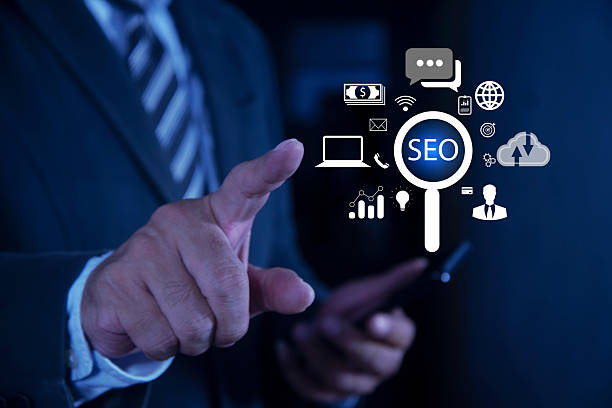
#URL_structure and #internal_linking are two vital elements in On-Page SEO that help search engines discover and index your site’s pages, and also assist users in easy navigation within the site.
A clean, short, and keyword-rich URL structure not only provides clear signals to search engines about the page’s content but is also more understandable for users and can positively impact the click-through rate in search results.
Avoiding unnecessary characters, using hyphens instead of underscores to separate words, and keeping the URL length short are key principles.
Internal Linking refers to placing links from one page to another within the same website.
This is a specialized and very powerful strategy for distributing “SEO value” (Link Equity) throughout your site.
By linking from high-authority pages to more important pages, you can show search engines which pages are more significant to you.
Using relevant and keyword-rich Anchor Text is one of the best ways to strengthen a specific page’s On-Page SEO.
This text should fit naturally into the content and be meaningful to the user.
A strong internal linking structure can help improve user dwell time on the site, reduce Bounce Rate, and ultimately, enhance page rankings in search results.
This section is an important guide for optimizing your site’s structure for On-Page SEO and user experience.
Technical Aspects of On-Page SEO; Speed, Mobile, and Structured Data

#Technical_aspects of On-Page SEO primarily deal with optimizing your website’s technical infrastructure so that search engines can easily crawl, index, and rank your site.
Page Speed is one of the most important ranking factors and directly impacts user experience.
Today’s users expect pages to load quickly, and if your site is slow, they are likely to leave it.
Tools like Google PageSpeed Insights and GTmetrix can help you identify speed issues and their solutions.
Important Tools for Technical On-Page SEO Aspects
| Tool | Main Use | Related Technical Aspect |
|---|---|---|
| Google PageSpeed Insights | Analyzing and improving page loading speed | Site Speed |
| Google Search Console | Reporting crawlability, indexing, mobile-friendliness, and site errors | Crawling, Indexing, Mobile-friendliness |
| Schema Markup Validator | Validating Structured Data (Schema Markup) | Structured Data |
| Screaming Frog SEO Spider | Full site crawling to identify technical SEO issues (broken links, redirects) | Technical Audit |
Mobile-friendliness is also of paramount importance, as most users today access the internet via mobile devices.
Your site should be designed to provide a consistent and optimized user experience across all screen sizes.
Structured Data or Schema Markup are codes that help search engines better understand specific content on your page and display it in richer forms (Rich Snippets) in search results.
This can significantly increase the Click-Through Rate (CTR).
Setting up the Robots.txt file and XML Sitemap are also crucial aspects of On-Page SEO that help search engines correctly crawl and index your pages.
This analytical and specialized section gives you a deeper insight into the technical optimization of On-Page SEO.
User Experience (UX) and Its Role in Improving On-Page SEO
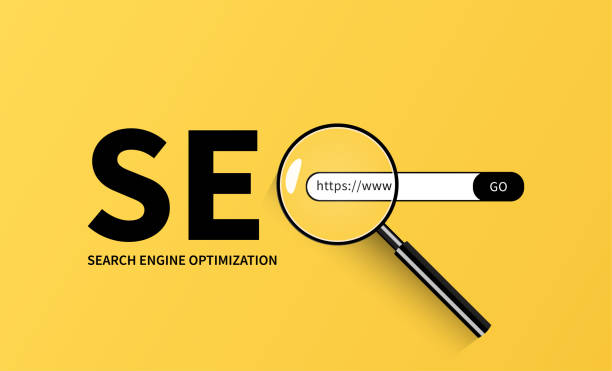
#User_Experience (UX) is no longer an indirect factor in On-Page SEO; rather, it directly impacts your site’s ranking.
Search engines like Google aim to provide the best possible experience to their users, and sites with poor user experience cannot maintain high rankings in the long run.
UX encompasses all aspects of user interaction with your website, from visual design and easy navigation to site loading speed and responsiveness.
The main goal of improving UX is to create a positive and engaging experience for visitors, encouraging them to stay longer on the site and interact with the content.
Factors such as low Bounce Rate, high Dwell Time on the page, high Click-Through Rate (CTR) in search results, and the number of Pages per Session are all indicators of good user experience and send positive signals to search engines.
To improve On-Page SEO through UX, focus on responsive design so that your site displays well on all devices.
Improving site navigation structure, using clear Calls-to-Action, and ensuring easy access to important information are other actions you can take.
This explanatory section helps you understand how every aspect of your site’s design and performance can impact its SEO, ultimately leading to increased organic traffic and conversion rates.
Does your current website convert visitors into customers or drive them away? Solve this problem permanently with professional corporate website design by Rasawweb!
✅ Create powerful credibility and branding
✅ Attract targeted customers and increase sales
⚡ Get a free consultation now!
Monitoring and Analysis; Measuring On-Page SEO Performance
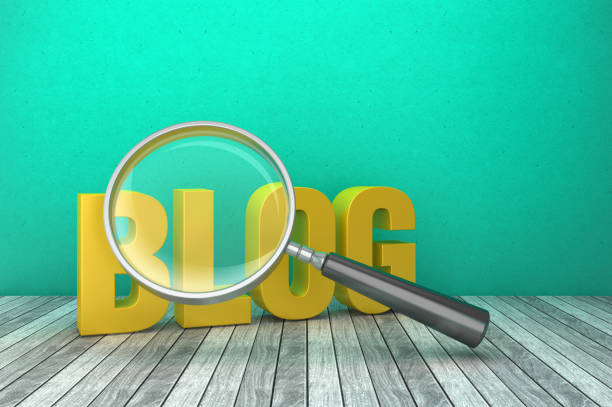
#Monitoring_and_analyzing On-Page SEO performance is a critical step in any optimization strategy.
Without measuring results, you cannot understand which of your tactics have been effective and which need improvement.
Tools like Google Analytics and Google Search Console are your two main allies on this path.
Google Analytics allows you to monitor site traffic, referral sources, user behavior on the site, conversion rates, and many other metrics.
This analytical information helps you identify your site’s strengths and weaknesses from an On-Page SEO perspective.
Google Search Console provides valuable information about how Google interacts with your site, including the keywords users used to find your site, page indexing status, crawl errors, and site performance in mobile searches.
Monitoring these metrics helps you quickly identify and resolve technical issues and ensure the overall health of your On-Page SEO.
Additionally, examining the ranking of primary and secondary keywords, organic traffic for each page, and bounce rate are important indicators of the success or failure of your on-page optimization efforts.
This section guides you on how to interpret data and use it to make informed decisions for your future On-Page SEO strategies.
Advanced Strategies and the Future of On-Page SEO
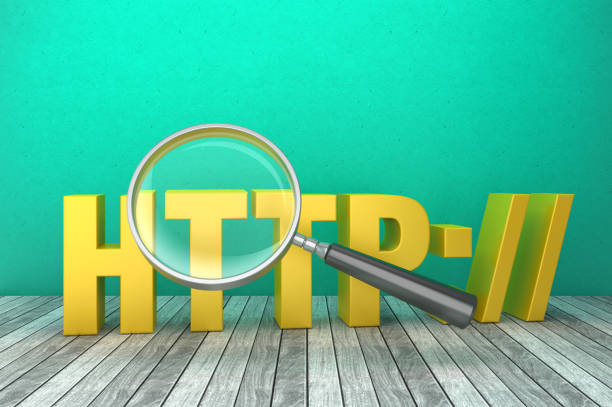
#Advanced_strategies in On-Page SEO go beyond the basics and address aspects such as optimization for voice search, artificial intelligence, and fully personalized user experiences.
With the growth of technology and continuous changes in Google’s algorithms, a specialized and forward-looking approach to On-Page SEO is essential.
Optimizing for Voice Search SEO requires focusing on conversational keywords and long-tail queries, as users tend to express their questions fully in voice searches.
This is a newsworthy and rapidly growing field.
Furthermore, with advancements in artificial intelligence and machine learning, search engines’ understanding of content has become deeper and more complex.
This means your content should be rich and relevant not only in terms of keywords but also semantically and conceptually.
Optimizing for User Intent (search purpose) has become more important than ever.
Instead of focusing solely on keywords, concentrate on providing the best answer to the user’s actual need.
On-Page SEO in the future will move more towards optimizing for “topics” rather than “keywords.”
Creating Content Clusters and Pillar Pages that comprehensively cover a specific topic and are interconnected through internal linking is an advanced and analytical strategy that helps your site be recognized as an authoritative reference in its field.
These developments indicate that On-Page SEO is not a static process and constantly requires updating and adapting to the latest trends.
Frequently Asked Questions
| Question | Answer |
|---|---|
| What is On-page SEO? | On-page SEO refers to a set of actions performed within your website to improve its ranking in search engine results. This includes optimizing content, site structure, and HTML code. |
| Why is On-page SEO important? | On-page SEO helps search engines understand your page’s content and determine if your content is relevant to searchers. It is the foundation of any successful SEO strategy. |
| What are the key elements of On-page SEO? | Page title (Title Tag), meta description, keyword usage, image optimization, heading structure (H1, H2, …), internal linking, and content quality are key elements. |
| How to optimize the page title (Title Tag)? | The page title should include the main keyword, be attractive and clickable, and be between 50 to 60 characters long (or suitable pixels) to be fully displayed in search results. |
| What is the role of meta description in On-page SEO? | The meta description is a summary of the page’s content displayed below the title in search results. Although it does not directly impact ranking, it helps SEO by increasing the click-through rate (CTR). |
| What is the importance of using heading structure (H1, H2, H3) in On-page SEO? | Headings structure the page’s content and make it easier to read. H1 is usually the main title of the page and should include the keyword. H2 and H3 are used to organize subsections and help search engines understand the content hierarchy. |
| How to effectively use keywords in content? | Keywords should be used naturally and logically throughout the content, including the introduction, body, and conclusion. Avoid keyword stuffing. |
| What steps are involved in optimizing images for On-page SEO? | It includes compressing images to reduce size, using descriptive file names, adding appropriate Alt Text, and optimizing image titles and descriptions. Alt Text is crucial for accessibility and helping search engines understand image content. |
| What is Internal Linking and what are its benefits? | Internal linking means creating links from one page on your website to another page on the same website. This helps users navigate your site easily, distributes page authority across the site, and helps search engines better understand your site’s structure. |
| What is the importance of content quality in On-page SEO? | High-quality, accurate, comprehensive, and valuable content for users, is the cornerstone of On-page SEO. Search engines prefer content that meets user needs. Quality content leads to longer Dwell Time and reduced Bounce Rate, which are positive SEO signals. |
And other services of Rasa Web Advertising Agency in the field of advertising
Smart Custom Software: A fast and efficient solution for increasing click-through rates with a focus on using real data.
Smart Custom Software: Designed for businesses looking to manage campaigns through intelligent data analysis.
Smart Advertorial: An exclusive service for increasing website traffic based on real data utilization.
Smart Advertorial: A combination of creativity and technology for online growth through custom programming.
Smart Google Ads: A fast and efficient solution for increasing click-through rates with a focus on using real data.
And over hundreds of other services in the field of internet advertising, advertising consultation, and organizational solutions
Internet Advertising | Advertising Strategy | Advertorial
Resources
Comprehensive Internal SEO Guide by Seokar
Complete SEO Guide by Digiato
On-Page SEO Training by MihanWP
What is SEO? by AlohaHost
? Rasaweb Afarin Digital Marketing Agency, your strategic partner in the path to online growth and prominence. We guide your business towards the pinnacles of success by providing innovative solutions from secure website design to professional SEO optimization.
📍 Tehran, Mirdamad Street, next to Bank Markazi, Kazeroun Jonoubi Alley, Ramin Alley, Plaque 6

